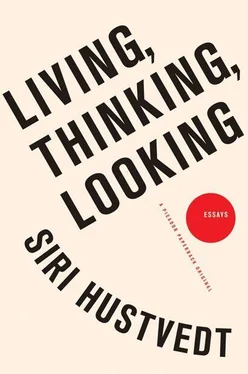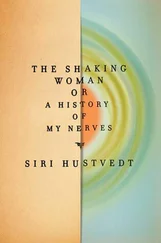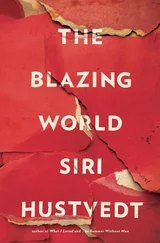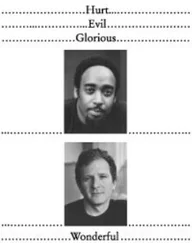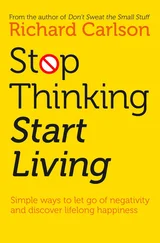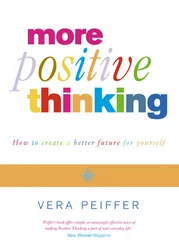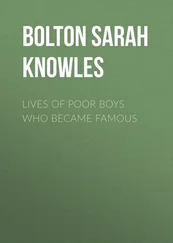Unlike English, the Scandinavian languages are word poor. With William the Conqueror in 1066 and the infusion of Latinate French into Anglo-Saxon, what we now know as English evolved. And yet, it’s exactly their poverty of vocabulary that gives writers possibilities in the Scandinavian languages that English writers don’t have. A word like lys in Norwegian — which means both light and candle — allows repetitions, ambiguities, and depths that aren’t possible in English. Lys is a word heavy with the knowledge of darkness, of summer and winter, of precious long days of light opposed to long days of murk and clouds. In Bergen, where I went to gymnasium for a year, it rained so much that when the sun was shining, the authorities canceled school. Even after she had been living in Minnesota for years, my mother would turn her face to the sun and close her eyes as if the warm rays might disappear any moment. Perhaps the darkness lies behind the omnipresent candles in Scandinavian households, too, lit even during the day and shining in rooms at night. The northern experience of darkness and light is untranslatable . The contrast between them has to be lived in the body. I have often wondered what immigrants to Scandinavia must feel when they arrive from places where summer and winter aren’t so radically defined by light and dark, how strange it must be to shop in afternoon gloom or see the sun late at night in summer. I have wondered how it changes the rhythms of their lives and the meaning of the words light and dark in their native languages. My paternal grandparents and my father, none of them born in Norway, all spoke English with Norwegian accents. Their Norwegian, however, was unlike the language spoken on the other side of the Atlantic. Their speech was dense with nineteenth-century locutions and sprinkled with hybrids — nouns borrowed from English and assigned a gender — words for things that had no Norwegian equivalent.
This is a certainty: like the rest of Europe, Scandinavia is no longer homogenous. The stereotype of the giant, pale-skinned, Lutheran blonde (the only stock character I embody perfectly) has become an anachronism and is being replaced by a variety of body types, complexions, and religions. I, for one, celebrate a changing image of Scandinavia, because migrations of people from over there always enliven the culture of here . Movements of people create new words, new ideas, and inspire new art. I am the product of an immigrant culture in the Midwest, and I now live in New York City, where forty percent of my fellow inhabitants were born in another country. On one of my last trips to Oslo, I climbed into a taxi, gave an address, and began a conversation with the driver. His father had been born in Pakistan, but he was born in Norway. He needn’t have told me; his Oslo dialect was unmistakable.
While immigrants always revivify the country they enter, their presence also creates conflict. In the United States, where all of us, with the exception of Native Americans, came from somewhere else, superiority was measured in generations. The longer your family had lived in America, the better. In 1972–73, when I lived in Bergen, there were no immigrants in town, and yet with a regularity that never failed to surprise me, and despite the fact that I was a passionate supporter of civil rights, I was attacked for my country’s racism. After the wave of Pakistani immigration to Norway, I returned to find people casually using racial slurs and prey to denigrating stereotypes. In short, they said things that would have been anathema in the United States. Like their cohorts all over the world, right-wing politicians in Scandinavia are guilty of thinking in terms of us and them, of exploiting ignorance and fear to maintain a fiction of “the nation,” not as a shared geography or language, but nation as blood or background. This is always dangerous, and it inevitably stinks of the ugliest of ideas: racial purity. In the United States, one of the oddest legacies of our racist culture is that people who have very pale skin but some African ancestry, like Lena Horne or Colin Powell, are inevitably called “black” rather than “white.” The Nazi racial laws created the most ludicrous hairsplitting over percentages of Jewishness in the population, a frankly absurd notion in a country where Jews had lived for hundreds of years and had been marrying Gentiles for just as long. In the tiny world of immigrants and their children and grandchildren in which my father spent his boyhood, the Swedes and Danes in neighboring communities were not regarded as linguistic cousins with important historical and cultural links to Norwegians. They were foreigners . And yet, there is no story without change. That world my father knew as a child is gone forever. In college, I knew a person with a background he described as “part Swedish, part German, and part Sioux Indian.” My daughter refers to herself as “half Norwegian” and “half Jewish.” She likes to call herself a “Jewegian.” Scandinavia is a word whose meanings are in flux. Its myriad references and significations are being determined, and we can only hope that it will stand as a sign of inclusion, not exclusion.
2005
INGER CHRISTENSEN IS DEAD. A great writer has died. I know that great is a word we often use to decorate a venerable cultural figure and then put him or her on a high shelf with the other moldering greats, but this is not my intention. Great books are the ones that are urgent, life changing, the ones that crack open the reader’s skull and heart. I was in my early twenties when I first read Det, and I felt I had been sent a revelation. This work was like no other I had ever read — its rhythms and repetitions were of my own body, my heartbeat, my breath, the motion of my legs and the swing of my arms as I walk. As I read it, I moved with its music. But inseparable from that corporeal music, embedded in the cadences themselves, was a mind as rigorous, as tough, as steely as any philosopher’s. Christensen did not compromise. Paradox upon paradox accumulated in a game of embodied thought. Logic, systems, numbers came alive and danced for me, but they did so hand in hand with ordinary things, which her voice enchanted and made strange. She made me see differently. She made me feel anew the power of incantation. I read more of her work then. I love especially her poems.
I met her twice, first at a festival in New York City. I rushed up to her, shook her hand, and babbled some words in an effort to articulate my intense admiration. She was kind. The second occasion was in Copenhagen at a dinner where I sat beside my idol, who was charming, funny, and told me she wouldn’t return to New York because nobody let you smoke there. The merry, unpretentious woman at the table and the great poet were one, and yet there is always some split at such moments between the person in the room and the person on the page. I didn’t know the woman, but the poet altered my inner world. She whispers to me in my own writing, a brilliant, fierce literary mother whom I will read and reread again and again. The last words belong to Christensen: the music of life and death. They are the last three lines of Det .
En eller annen er død og bæres ud av sit hus ved mørkets frembrud.
En eller annen er død og betragtes af nogen der omsider er blinde.
En eller annen står stille og er omsider alene med den anden døde.
Someone or other is dead and is carried out of the house as night falls.
Someone or other is dead and is seen by someone who is blind at last.
Someone or other stands still and is alone at last with the other dead person.
Читать дальше
